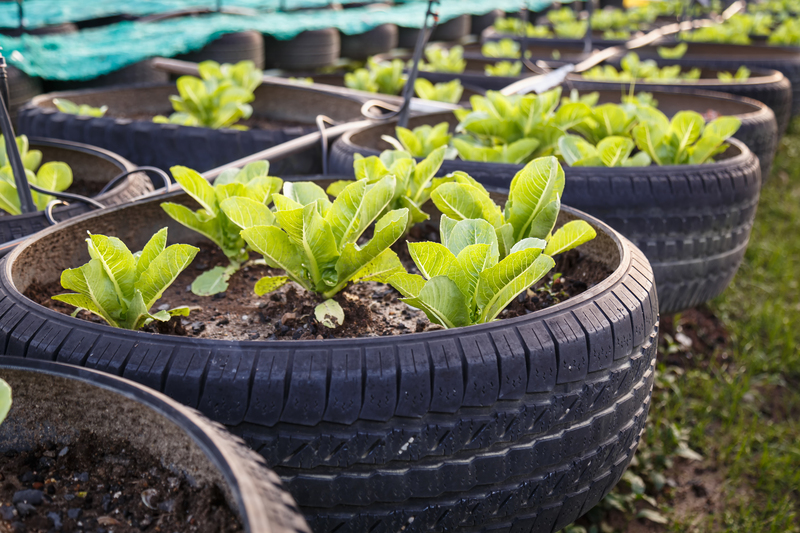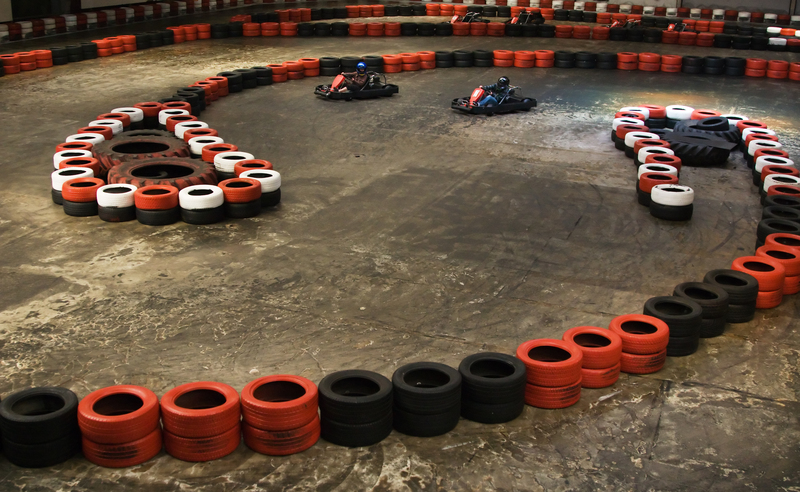A Guide to Eco-Conscious Packaging and Cardboard Disposal Techniques
Are you seeking sustainable solutions for your packaging needs? Eco-conscious packaging and effective cardboard disposal techniques are more important than ever in today's environmentally aware world. This comprehensive guide delves deeply into eco-friendly packaging materials, practical strategies for minimizing waste, and innovative ways to dispose of and recycle cardboard responsibly.
Why Eco-Conscious Packaging Matters
With the alarming rise in packaging waste, adopting eco-conscious packaging options goes beyond a trend--it's a necessity. Everyday, businesses and individuals contribute tons of packaging waste, much of which ends up in landfills. By switching to environmentally friendly packaging, the burden on our planet can be significantly reduced.
- Reduces landfill waste
- Lessens carbon footprint
- Promotes a circular economy
- Appeals to eco-aware consumers
Sustainable packaging not only benefits the environment but also enhances brand reputation and customer loyalty. Many consumers now prefer products with minimal impact on nature, making it crucial for businesses to adopt sustainable packaging practices.

Understanding Eco-Friendly Packaging Materials
The move towards green packaging solutions revolves around choosing the right materials. Let's explore the top eco-packaging materials ideal for creating less waste and encouraging easier disposal.
1. Recycled Cardboard and Paper
- Made from post-consumer waste and renewable sources
- Easy to recycle multiple times
- Biodegradable and compostable in most cases
Cardboard, often overlooked, remains one of the most accessible biodegradable packaging materials worldwide. Its wide availability and recyclability make it a go-to for sustainable packaging strategies.
2. Bioplastics and Compostable Films
- Derived from cornstarch, potato starch, or sugarcane
- Breaks down into harmless substances in composting conditions
- Reduces reliance on petroleum-based plastics
Opting for compostable packaging ensures that disposed materials don't linger in the environment, addressing the global plastic crisis head-on.
3. Mushroom and Plant-Based Packaging
- Innovative, natural alternatives to polystyrene foam
- Decompose within weeks in natural environments
- Support agricultural sustainability
4. Minimalist and Reusable Packaging
- Reduces waste through reusability
- Minimizes materials used--fewer layers and components
- Creative packaging designs can encourage repeated customer use
Key Features of Sustainable Packaging
- Made from renewable or recycled resources
- Designed to reduce unnecessary waste
- Easy to recycle or compost post-use
- Limits use of toxic chemicals or dyes
Best Practices for Eco-Conscious Packaging
Transitioning to eco-conscious packaging methods doesn't have to be challenging. Consider the following practical tips to help your business or household minimize environmental impact:
- Choose appropriately sized packaging - Eliminate excess space and reduce the demand for filler materials.
- Source materials from local suppliers - Cuts down on the carbon footprint associated with transport.
- Opt for mono-material packaging - Makes the disposal and recycling process easier for consumers.
- Incorporate clear instructions for disposal - Educate customers on how to responsibly recycle or compost the packaging.
Packaging Design For Circular Economy
Designing with the circular economy in mind boosts recycling rates and reusability. Prioritize packaging that:
- Can easily be separated into recyclable parts
- Is made entirely from a single, recyclable material
- Includes incentives for customers to return or reuse packaging
Partnering With Sustainable Suppliers
Working with sustainable packaging suppliers ensures your materials meet high environmental and ethical standards. Look for certifications like FSC, Green Seal, or Biodegradable Products Institute (BPI) labels.
Cardboard Disposal Techniques: How to Dispose Responsibly
Cardboard is everywhere--from shipping boxes to food packaging. However, not all cardboard recycling processes are created equal. Using proper cardboard disposal techniques improves recycling efficiency and keeps our waste streams clean.
1. Preparation: Flatten and Clean Boxes
- Remove tape, labels, and any non-cardboard materials - Contaminants can interfere with recycling machinery.
- Flatten boxes - Saves space, making recycling collection more efficient.
- Keep cardboard dry - Wet cardboard often can't be recycled and may decompose in landfills instead.
2. Residential Curbside Recycling
Many communities accept cardboard in curbside bins. Be sure to:
- Follow your area's recycling guidelines
- Bundle large amounts for easy pickup
3. Drop-Off Recycling Centers
If curbside options are unavailable, local recycling centers provide drop-off points for cardboard and other packaging materials. Some centers accept waxed or greasy cardboard (like pizza boxes) for composting rather than recycling.
4. Composting Cardboard
Did you know some types of cardboard can be composted at home? Brown, unwaxed cardboard adds valuable carbon to your compost pile. Always shred cardboard first and avoid using pieces with heavy inks or coatings.
- Compost shredded pieces with green waste to balance carbon and nitrogen
- Avoid glossy or plastic-coated cardboards
5. Reusing Cardboard Creatively
- Gardening: Use for weed barriers or as a base layer for raised beds.
- Storage and shipping: Repurpose sturdy boxes for home or office organization.
- DIY projects: Cardboard can be used for crafts, educational projects, or pet habitats.
Innovative Solutions For Cardboard Waste
While traditional recycling and composting methods remain essential, innovative solutions are emerging to tackle cardboard waste more creatively and sustainably:
- Zero-waste shops: Encourage customers to return packaging for reuse or proper recycling.
- Industrial composting: Communities with access to industrial composting can handle a wider variety of cardboard types.
- Corporate recycling partnerships: Companies collaborate with waste management services for bulk recycling programs.
Common Mistakes in Cardboard Disposal and How to Avoid Them
Even the best intentions can go awry. Here are some common pitfalls and ways to ensure your cardboard disposal is truly responsible:
- Leaving food residue: Cardboard with food or oil contamination isn't recyclable; compost it instead!
- Recycling waxed or coated cardboard: Only certain facilities can handle these materials--check locally or compost as appropriate.
- Mixing materials: Remove all plastics, bubble wrap, or packing peanuts before recycling cardboard.
- Ignoring local recycling rules: Every city is different--educate yourself on what your program accepts.
Eco-Conscious Packaging Trends to Watch
What does the future hold for eco-friendly packaging and cardboard disposal? Several exciting trends are influencing both businesses and consumers:
- Smart packaging using QR codes - Helps consumers quickly access information on how to dispose of packaging correctly.
- Biodegradable adhesives and inks - Make whole packaging components compostable.
- Returnable and reusable shipping models - Retailers encourage customers to return packaging for rewards or discounts.
- On-demand packaging solutions - Tailor package sizes to products, eliminating the need for excess material.

Action Steps for Businesses & Households
Anyone can make a meaningful difference by adopting more eco-conscious packaging and cardboard recycling techniques in daily life or business operations:
For Businesses
- Audit current packaging and identify areas for improvement.
- Switch to sustainable packaging suppliers and materials.
- Train staff and educate customers about proper disposal.
- Set up in-house recycling stations and promote their use.
For Households
- Participate actively in local recycling programs.
- Purchase products with minimal or recyclable packaging.
- Reuse or creatively repurpose cardboard boxes whenever possible.
- Encourage neighbors and family to do the same.
Conclusion: Taking Responsibility for Our Packaging Choices
Adopting eco-conscious packaging and practicing efficient cardboard disposal techniques are vital steps in reducing environmental impact. Whether you're a business owner, consumer, or simply an eco-friendly enthusiast, your choices contribute to a healthier, more sustainable planet.
- Choose packaging made from renewable or recycled materials
- Dispose of cardboard properly by recycling or composting
- Always check and follow local recycling guidelines
- Support brands with strong sustainability initiatives
With commitment and proactive choices, we can transition to a circular packaging future that benefits both the planet and people. Next time you unbox a package, pause and think: how will you dispose of your cardboard--and what kind of packaging will you choose next time?